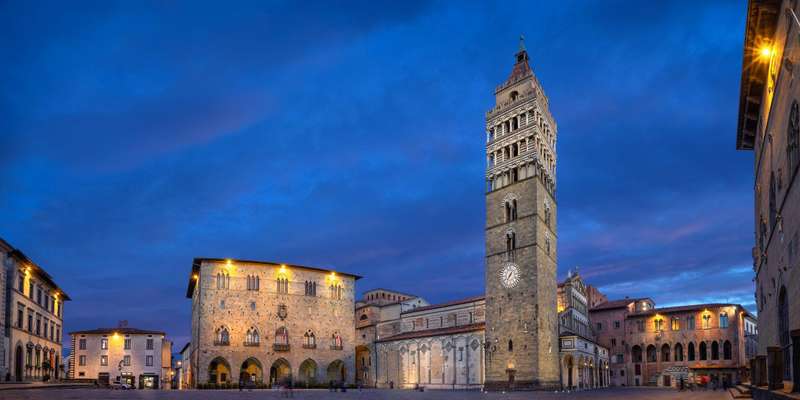- Home
- Useful Tips
- Exploring Pistoia's hidden medieval gems
Most travelers to Tuscany rush past Pistoia, unaware of its perfectly preserved medieval center and authentic local charm. Recent tourism data shows 83% of visitors cluster in just five Tuscan towns, leaving hidden gems like Pistoia blissfully crowd-free. The challenge? Navigating its labyrinthine alleys and understated attractions requires insights most guidebooks miss. Without local knowledge, you might overlook the 12th-century silver altar at San Jacopo or the secret rooftop views from Palazzo Comunale. The quiet magic of Pistoia lies in discovering its unhurried piazzas, artisan workshops, and centuries-old traditions – experiences increasingly rare in Italy's over-touristed hotspots. This undiscovered quality comes with a tradeoff: minimal English signage and few obvious tourist cues, turning what should be a delightful exploration into potential frustration.


Decoding Pistoia's maze-like historic center
Pistoia's medieval urban plan deliberately disorients visitors – a defensive feature that now charms explorers but can waste precious vacation time. The key lies in understanding its radial design from Piazza del Duomo, where eight main streets unfold like spokes. Local shopkeepers note most lost tourists make the same mistake: fixating on the cathedral while missing the interconnected network of covered walkways (sporti) that create hidden shortcuts. A free DIY walking route starts at Ospedale del Ceppo's famous della Robbia ceramics, follows Via degli Orafi's artisan goldsmiths, then uses sporti passages to reach lesser-known gems like San Bartolomeo in Pantano's carved pulpit. Morning light best illuminates the zebra-striped Duomo facade, while late afternoons reveal hidden details in the Baptistery's marble inlays. Those preferring guidance find docents at the tourist office lead affordable weekly walks focusing on medieval trade routes and hidden symbols.
Timing your visit for magical uncrowded moments
Pistoia's rhythm follows ancient market traditions most visitors miss. While summer attracts day-trippers, locals know Wednesday and Saturday mornings transform Piazza della Sala into a living medieval scene with farmers selling heirloom produce since 1300. Come July, the Giostra dell'Orso tournament fills streets with costumed processions – yet 90% of spectators cluster near the main square, leaving side streets authentically tranquil. An insider trick: visit churches before 11am when sacristans often unlock normally closed treasures like San Giovanni Fuorcivitas' sculpted portals. Winter offers unexpected advantages too; December's light installations turn the medieval center into an open-air gallery, while January's low sunlight perfectly illuminates the cathedral's astrological clock. For those prioritizing photography or peaceful exploration, the sweet spot arrives in late September when harvest festivals begin but summer crowds have dispersed.
Where to experience authentic Pistoiese traditions
Beyond architecture, Pistoia's living traditions reveal its medieval soul. The last working forge in Italy producing medieval-style nails operates discreetly near Via Curtatone – ring the bell and owner Marco might demonstrate techniques unchanged since the 1200s. At Antica Macelleria Falorni, butchers have prepared the region's prized pork products using Renaissance-era recipes for twelve generations. Time your lunch for 12:30pm when family-run trattorias like Osteria del Vicario serve ribollita in hand-thrown terracotta bowls, a tradition dating to pilgrim hostel kitchens. For hands-on experiences, Ceramiche Artigianali offers Wednesday workshops painting ceramics with medieval motifs seen in San Zeno's chapel. These immersive moments require no tickets or reservations, just an awareness of Pistoia's enduring rhythms that mass tourism hasn't disrupted.
Navigating Pistoia's understated masterpiece churches
Pistoia's ecclesiastical treasures often hide their brilliance behind modest facades, leading many to underestimate sites like Sant'Andrea with its Pisano pulpit that inspired Michelangelo. The free diocesan pass (available at the Duomo) unlocks seven normally closed churches, including San Leone with its rare Byzantine fresco fragments. Conservation efforts mean opening hours change frequently; sacristans recommend Tuesday and Thursday afternoons for the highest chance of accessing hidden crypts. Don't miss the cathedral's Chapel of St. James, where pilgrims once received their shells before walking to Santiago – the silver altar's intricate panels reward close inspection with scenes of medieval life. Those short on time should prioritize San Giovanni Fuorcivitas for its striped arches and 13th-century crucifix, a masterpiece visible without entry fees during morning hours when volunteers staff the door.
